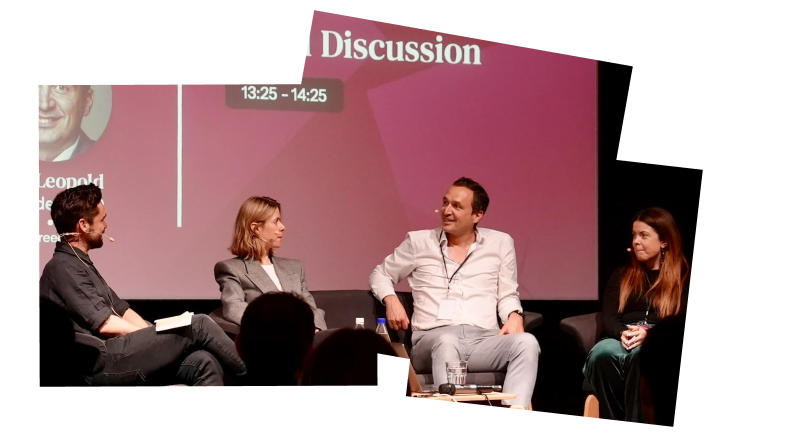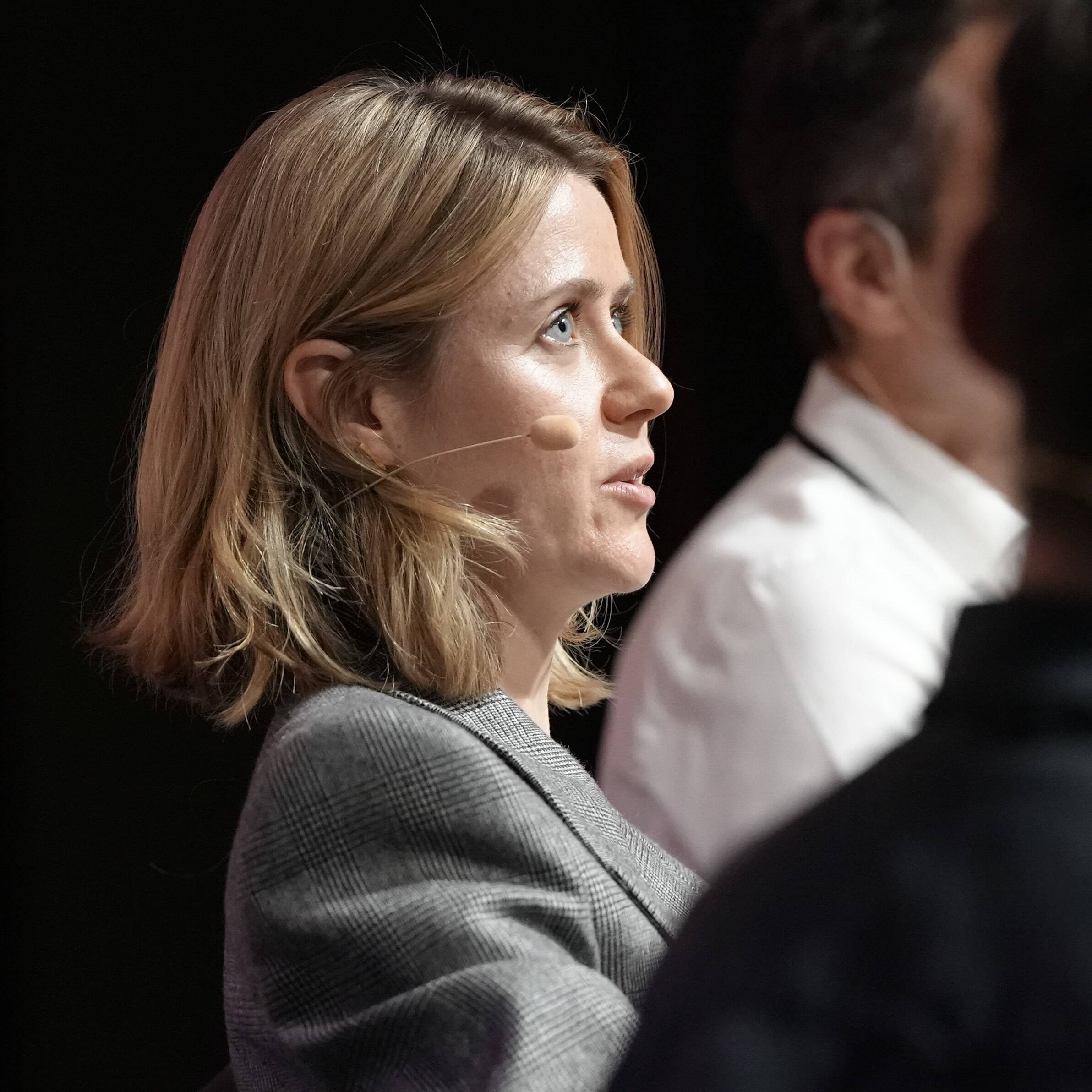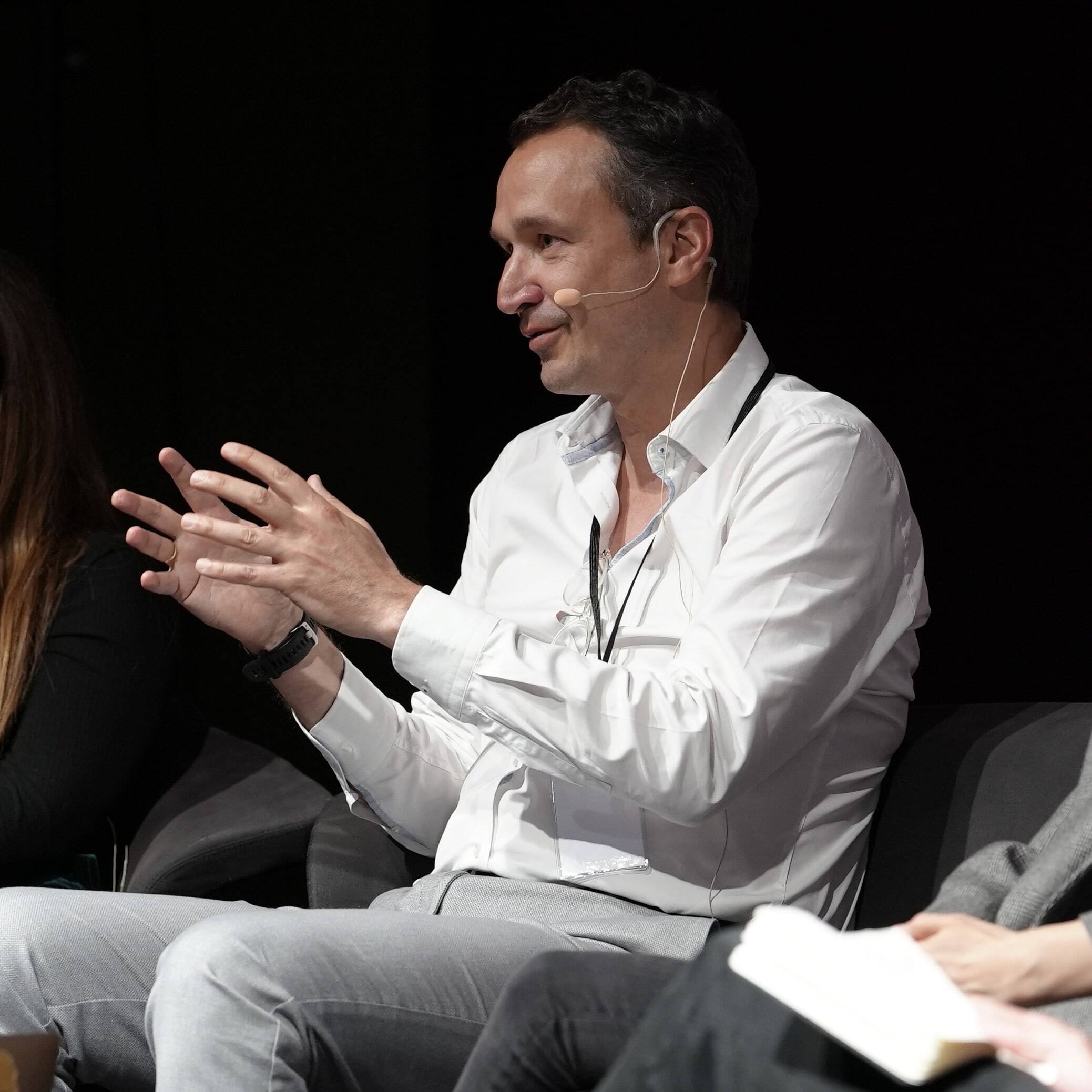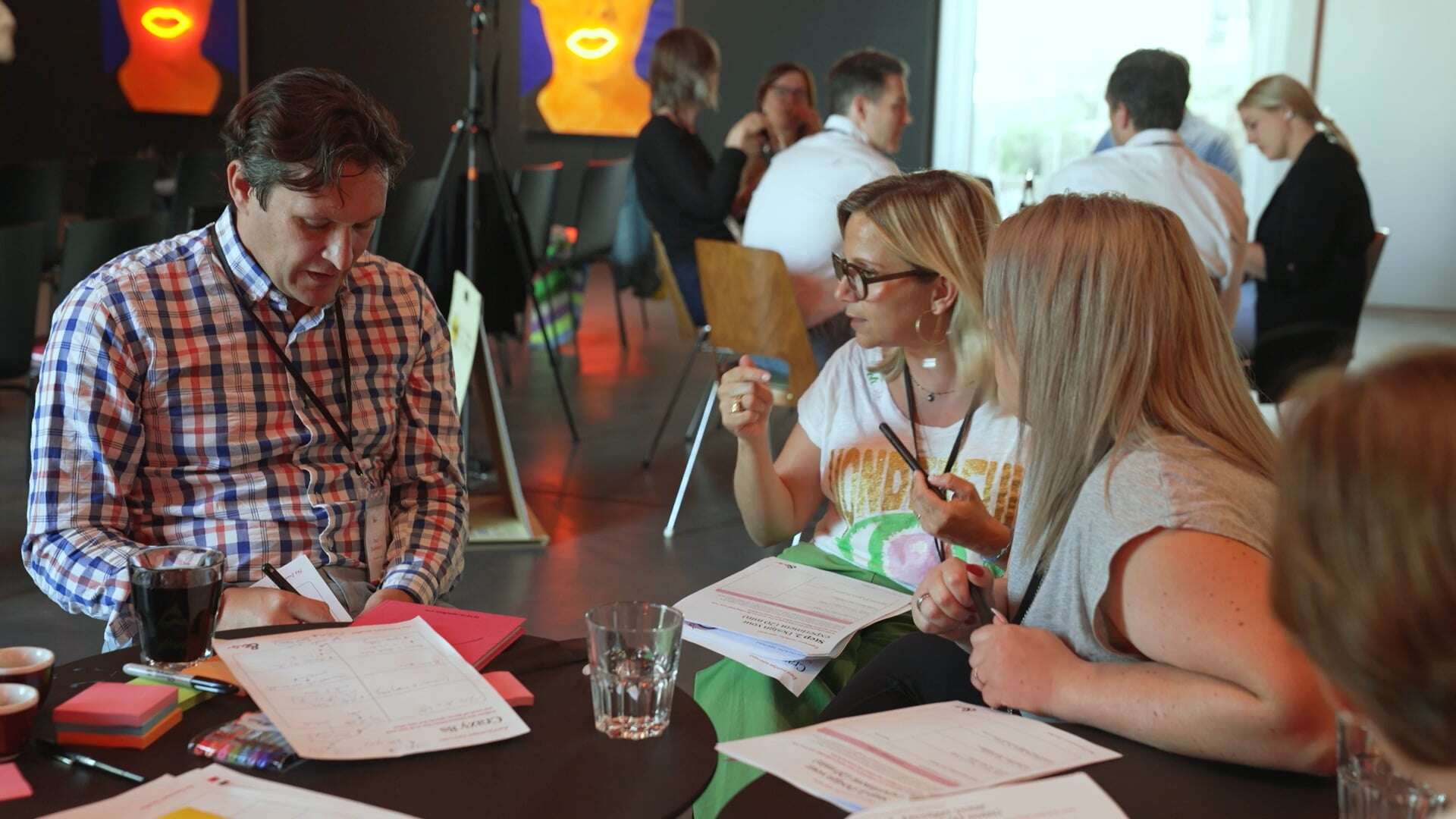Jump to a section:
Innovation insights from a cross-sector panel

Joe Spence moderated a panel discussion with our panel of industry experts:
- Veronica Breene – Founder and CEO of Vesta Insights, an exciting AI-led fintech startup on a mission to revolutionise home mortgage lending.
- Kayleigh Hartigan – Founder and CEO of Fertility Mapper, an intelligent, data-driven platform connecting the fertility service ecosystem. She has previously worked for the NHS and The Department of Health & Social Care.
- Eric Leopold – Eric is the founder of Threedot and a pivotal figure and innovator in the travel industry, having spent 15 years working at the International Air Transport Association (IATA).

Insight 1 - Get ‘scrappy’ with innovation to confirm you’re on the right path
Veronica and Kayleigh involve user feedback as early as possible to validate ideas. They both have a process for this, and have adopted a test and learn approach to experiment with ideas.
For Kayleigh, this is a digital feedback form which helps her confirm an idea would help people on their fertility journey.“Seeing people send [the feedback form] onto others showed our ideas had potential, saying things like ‘I wish this thing existed when I was starting my fertility treatment’.”
Kayleigh also later spoke about design sprints, in which her team conduct a small group of user interviews and testing stages to answer key questions about proposed product updates.“We'll take five interviews, mock up a wireframe, test it, and then do the next thing. Everything is optimised to answer our questions quickly.”
Veronica has a similar cadence in her team when making updates to the user interface, back-end models, and predictions of her AI-based application. “The faster you can get something in front of a client, the better. The modelling process doesn't have to work at the same pace. Ideally, the front-end piece will always be ahead, so you'll always be trying new things on different screens. And when [the testers] say, ‘yes, that's amazing, we really, really need that’ then it goes to the modelling team.”
Insight 2 - Run tests to de-risk projects and prevent sunk costs
Taking risks was a concern brought up by the audience, and all panellists touched on potential losses from not validating ideas early enough. For Kayleigh and Veronica, the benefit of testing with users early to ascertain an idea’s desirability means you can avoid sinking time, effort and development budget into something they won't want.
“Be clear and and ask your users the critical things you want to understand, especially when you're doing engineering development, because you can end up with something cool and everyone's like, ‘yeah, great – so what?’” – Veronica
“For Fertility Mapper, it's really important that we quickly spin stuff up, try it out, be clear on what we're testing, and then move on, because otherwise you could follow a road for several months that you can't come back from.” – Kayleigh
When thinking about the timing and need for business cases, Eric talked about a project to reduce lost luggage rates at airports through bag tracking. While the problem could mostly be solved through technology and process improvements, the cost implications of these updates on the entire aviation infrastructure far outweighed the benefits, given the rarity of the occurrence.
For Eric, this highlighted the importance of not just validating ideas, but validating the commercials behind them as well – particularly when it comes to complex global industries where costs increase exponentially.“The worst thing is embarking on something that has the opposite effect to what you wanted in the beginning, leading to higher financial or efficiency costs.”
From a smaller business perspective, Veronica highlighted the importance of testing the value of an idea as the primary action before spending time and effort on assessing scalability and profitability. “Business case questions around scalability and cost should be assessed after you can provide a solution. Your first need to answer ‘is the idea good?’, then you can think about how you scale it – because they are different considerations.”


Insight 3 - Considerations for large or complex organisations
Some audience members expressed the difficulties of kickstarting a culture of innovation at large companies where there is additional red-tape and bureaucracy. Kayleigh explained how her small team's agile practices could be transferred to larger organisations.“Is there a space for you to test, like a big finance budget for innovation? And if there is, it's about building that muscle, building that culture, and understanding where the real risk is and where you can safely take risks and make some fast decisions – then build that culture into your teams.”
And Veronica had a tip to help large companies increase employee retention rates – particularly for those in leadership positions who have the ability to steer the ship. “Make sure that you're looking to build a space where your staff can express themselves – let them come up with their own ideas.” This notion that companies should have a playbook or way of working that empowers innovation was core to this event and is a big part of &us, read more about it here.
Eric spoke about the entrepreneurial spirit and how you can adapt to the business environment you’re in. He also touched on how a business case need not be seen as the enemy of innovation, but rather a way to bring others along on the journey of your idea. “If you have a gut feeling, it tells you what to do. But if you want to bring everybody along with you, you need to have a tool so they can understand how they contribute and how they benefit. And that's really a business case. To me, it's a communication tool to bring everybody on board when you have a complex environment to deal with.”
How leaders can build a culture of experimentation
.webp?width=4240&height=2384&name=DSC00274.JPG%20(1).webp)
Emily Dent (&us Partner) shared four principles to help leaders build a culture of innovation and experimentation to combat the astronomical $8.8tn that is lost globally due to lack of employee engagement. Down below is a summary of the key lessons – inspired by nature and our experience of working with clients in large organisations.

1. Move like starlings
Starlings are birds that move in large structures called murmurations to find food and safety. Interestingly, starlings in a murmuration are only ever communicating with the closest 5-7 birds – but somehow the flock of hundreds is able to move nimbly and adapt with great speed.
Instead of a pyramid-based approach, by placing trust in small teams, empowered to make decisions that are supported by a network, you can avoid getting stuck in large-scale, slow, bureaucratic programmes and decision-making. This trust gives teams the ability to move quickly and adapt rapidly to new learnings and situations.

2. Build playgrounds
You need to create a safe place to experiment in your organisation for people to think freely and feel comfortable bringing ideas forward. To do this, establish boundaries for when and how ‘play’ happens to act as guardrails, in a way that does not stifle creativity.
“The playground is a liberating structure, not a constraining structure. If your team understands the rules of engagement, they will feel safe to play.” – Emily Dent

3. Get people managing less, and making more
In a previous study run by &us, we discovered many leaders were spending most of their time ‘managing’ – that is, updating people, having meetings about meetings, producing comms plans etc. While sometimes important, this was forcing their ‘making’ work to be done after hours (often unpaid).
To rebalance the scales, Emily suggested being more intentional about which meetings you attend, and not being afraid to say no – especially to meetings with many attendees or no agenda. ‘Making’ is how progress happens, so you need to dedicate time to it, which starts by having a long hard look at your calendar.

4. Be more like a mushroom, instead of a tree
Mycelium networks are large alien-like structures of fungus that live underground and are where mushrooms come from. These structures can be huge (as big as 965 hectares) and evidence suggests that trees are actually being fed by these networks and communicating through them. The mycelium networks themselves are even said to control who gets resources in a forest. But what does that have to do with leadership?
“We used to think leaders were the tallest tree in a forest, but you actually need to be the mycelium network. Because it's not just you as a leader, it's your network as a leader. How are you thinking about the traffic control in your organisation? How are you thinking about bringing in new resources? How are you thinking about making sure that the weakest gets some attention? How are you sharing things out?”
To begin considering how this can inspire you as a leader, Emily encourages thinking about three network types in your career:
- Operational network: How do you get things done in your organisation?
- Personal network: Who will support, or guide you through the hard times?
- Strategic network: How do you connect with the people outside of your organisation who know about the future of your industry?
To recap
Validating ideas starts with speaking to real customers, testing early and often, and building a mindset of testing and learning into the way you work. It can be difficult to integrate these ways of working into large organisations but it can be done if leaders make room in their own workloads to refocus teams on making, and create a safe space for teams to experiment.
Tied in with the learnings from the panel, it's also vital to consider the four principles detailed by Emily above to help streamline communication, ensure people understand the guardrails for experimentation, avoid unnecessary meetings and have time allocated time for making, all whilst considering the various networks you as a leader have at play.
If you would like to find out more about the topics discussed, or how a culture of innovation could be fostered in your organisation, please get in touch here, or send us an email (hello@andus.co) and we’ll be in touch.
See the event in action

